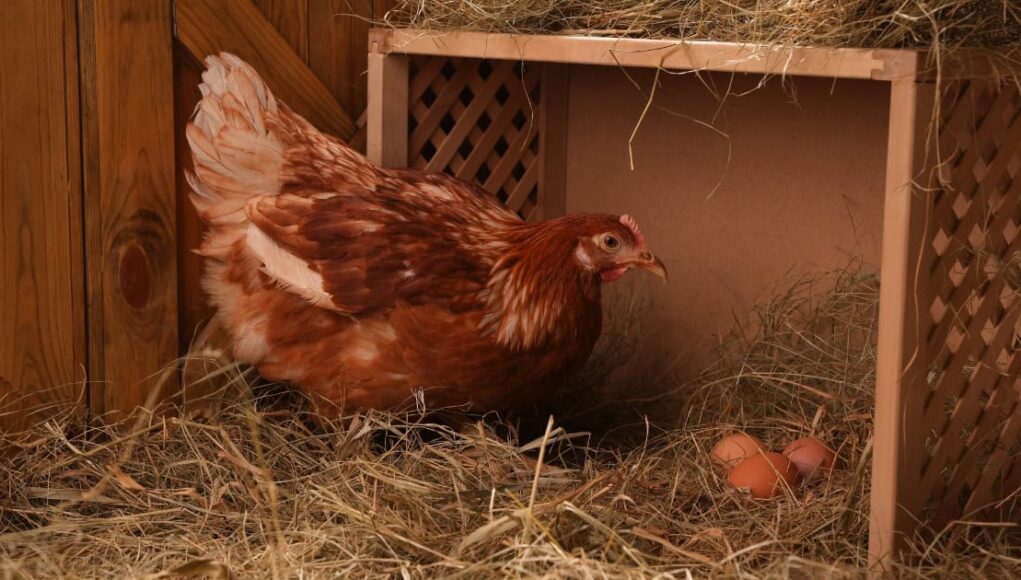In the world of backyard poultry keeping, providing dust baths near nesting areas is a critical aspect of ensuring your chickens’ health and happiness. Chickens naturally engage in dust bathing as a way to clean their feathers and skin, deterring parasites such as mites and lice. Having these baths readily accessible near their nesting areas can greatly enhance their quality of life, contributing to more productive and contented hens.

What Exactly Are Dust Baths?
Dust baths are essentially shallow pits filled with fine, dry materials such as dirt, sand, or wood ash. When chickens roll around in these materials, they help remove excess oil from their feathers and skin, and the dust particles suffocate any external parasites. This behavior is instinctive and essential for their well-being.
Why Place Dust Baths Near Nesting Areas?
Locating dust baths near nesting areas is beneficial for several reasons. Primarily, it ensures that hens can quickly and easily access dust baths when they need to, without straying too far from their nests. This is particularly important for broody hens or those about to lay eggs, as they may not want to wander far from their nesting spots.
For more on how nesting areas can be optimized for your flock, check out this guide to identifying laying signs on our partner site. Additionally, learn about effective nesting box designs from an expert in the field.
Materials Suitable for Dust Baths
When setting up dust baths near nesting areas, it’s important to use the right materials. Sand is a popular choice because it is easy to source and maintain. Wood ash and fine dirt are also excellent materials, as they provide the fine particles necessary to combat parasites.
Sand
Sand is often praised for its versatility and effectiveness. It absorbs oils and provides a good texture for dust bathing. Ensure the sand is clean and free from contaminants.
Wood Ash
Wood ash is another great option as it has fine particles that are effective at suffocating parasites. However, ensure it is free from chemicals or treated wood remnants.
Fine Dirt
Fine dirt is natural and readily available, making it an easy choice for many poultry keepers. It should be dry and free from any harmful substances.
How to Create the Perfect Dust Bath
Creating a dust bath near nesting areas can be a simple and rewarding task. Start by choosing a location that is sheltered from rain and excessive wind. A spot with some shade is also ideal, as it prevents the materials from becoming too hot for the chickens to enjoy.
To build the dust bath, dig a shallow pit about 6 to 12 inches deep and fill it with your chosen materials. Ensure it is large enough for several chickens to use at the same time, as dust bathing is often a communal activity.
Maintaining Dust Baths
Regular maintenance of dust baths near nesting areas is crucial to keep them clean and effective. Remove any clumps or debris regularly, and top up with fresh materials as needed. This will ensure that your chickens always have a clean and effective dust bath ready for use.
For more detailed instructions on setting up nesting areas, consider visiting our article on community nesting box design.
Integrating Dust Baths with Nesting Boxes
Integrating dust baths near nesting areas with nesting boxes with lids can create a more holistic and convenient environment for your flock. This setup ensures that hens have everything they need within close proximity, reducing stress and encouraging natural behaviors.
FAQs
Why do chickens need dust baths?
Dust baths help chickens keep their feathers clean and free from parasites. The fine particles in the dust suffocate mites and lice, which can improve their overall health and comfort.
How often should I refresh the dust bath materials?
It’s recommended to check the dust baths weekly and refresh the materials as needed. If you notice clumping or debris, it’s time to clean it out and add new materials.
Can I use other materials for dust baths?
While sand, wood ash, and fine dirt are the most common, some chicken keepers use diatomaceous earth in small quantities. However, it should be used with caution as it can be harmful if inhaled in large amounts.

Conclusion
Providing dust baths near nesting areas is an essential aspect of chicken care that promotes natural behaviors and enhances the well-being of your flock. With the right materials and regular maintenance, you can ensure your chickens remain healthy, happy, and productive.
This article contains affiliate links. We may earn a commission at no extra cost to you.











